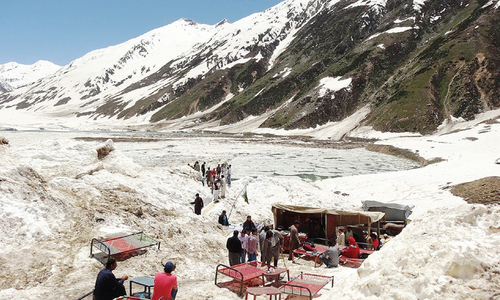Climate Change and Environmental Degradation Threaten Gilgit-Baltistan
Gilgit-Baltistan, a region in northern Pakistan, is facing a growing environmental crisis that has been exacerbated by climate change. The Environmental Protection Department has issued warnings about the severe water shortage in the area, which is being driven by a combination of reduced snowfall and accelerated glacier melting. These changes are not only impacting the natural landscape but also threatening the livelihoods of local communities.
Khadem Hussain, the Director of the Environmental Protection Department, has highlighted the increasing temperatures and frequent flooding that have become more common in the region. He explained that both external and internal factors contribute to the challenges posed by climate change. While global warming plays a significant role, local activities such as deforestation and urban expansion are also major contributors.
Internal causes of the environmental degradation include deforestation, population growth in green belts, vehicle emissions, and unregulated construction. These factors have led to a noticeable rise in temperature over the past 50 years, particularly in areas like Diamer and Bunji. The temperature increase of one degree Celsius has disrupted traditional weather patterns, leading to unpredictable seasonal changes.
Hussain pointed out that dry seasons are becoming longer, while rainfall is decreasing. Snowfall, which used to be a regular occurrence during the winter months, is now happening in off-season periods such as February, March, and May. However, this snow does not form glaciers, as it melts quickly in May and June. This rapid melting leads to flooding and creates water shortages in low-lying communities, further compounding the region’s challenges.
The impact of these changes is evident in the Jutial Nala, a critical water source for thousands of residents in Gilgit. This stream has seen a 70 percent reduction in water flow this year. Previously, it maintained a consistent flow throughout the year, but the accelerated melting of glaciers is now putting the region at risk of drought-like conditions over the next eight months.
Temperature differences between urban and rural areas are also becoming more pronounced. Gilgit city, with its limited tree cover and extensive development, experiences higher temperatures compared to nearby Denyor Tehsil. Despite being just four kilometers away, Denyor Tehsil remains three to five percent cooler due to its greater vegetation and lower levels of urbanization. This contrast highlights the importance of preserving green spaces and managing urban growth effectively.
Hussain emphasized that significant climate changes typically take 30-year cycles to become apparent. However, the trends currently observed in Gilgit-Baltistan suggest that these changes are already having a visible impact on the environment and local communities. The region is witnessing a shift in weather patterns, an increase in extreme weather events, and a decline in essential natural resources such as water.
As the effects of climate change continue to unfold, it is crucial for local authorities, communities, and environmental organizations to work together to implement sustainable practices. This includes promoting reforestation, controlling urban expansion, and investing in water conservation measures. Without immediate action, the region may face even more severe environmental and social consequences in the coming years.







